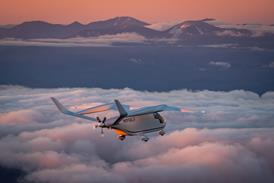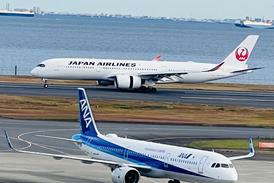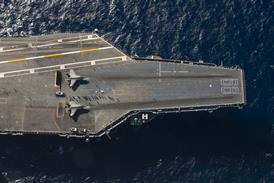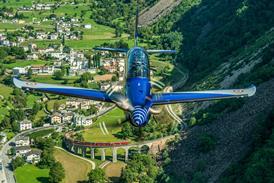The day-to-day commander of NATO's Operation Deny Flight in Bosnia, Maj. Gen. Hal Hornburg of the US Air Force, describes as "crucial" the roles of the 150 NATO combat aircraft under his control in covering any United Nations retreat from war-torn former Yugoslavia.
The director of the 5th Allied Tactical Air Force's Combined Air Operations Centre (CAOC) at Dal Molin AB at Vicenza, Italy, says: "If the UN forces have to fight their way out, you can imagine the enormous leverage air power could provide. It could provide them with a safer passage out of a bad situation through reconnaissance, combat air patrol to ensure that no enemy aircraft drops a single bomb on our troops, all the way through to, if required, close air support."
Hornburg says that he doubts, under the present political mandate, whether air power could help the UN Protection Force (UNPROFOR) contain a major outbreak of fighting in the region. "To contain the war you would have to prosecute against one enemy. So far we have not taken sides."
NATO members and the UN are also in the process of building up helicopter assets in the former Yugoslavia, including Royal Air Force Boeing Chinooks, Army Air Corps Westland Lynx, French Army Aviation Eurocopter Super Pumas and Chartered Russian Mil Mi-26 Halos, to help re-supply besieged Muslim enclaves and if necessary, rescue trapped UN troops.
A new UN heli-port is being established on the Adriatic coast at Ploce, Croatia, to support this gathering force. UN and NATO air planners envisage using their increased helicopter force to lift heavily armed NATO reaction forces into enclaves to protect threatened UN peacekeepers.
From his headquarters in northern Italy, Hornburg is responsible for producing the daily air-tasking messages for all Western aircraft being operated over the Balkans. He speaks daily to top UN commanders in Bosnia, including the UK's Lt. Gen. Rupert Smith, to ensure that NATO air operations are synchronised with UN ground operations. In past weeks he has sent NATO fighters on daily sweeps over Sarajevo in support of French UNPROFOR troops engaged in a tense standoff with Bosnian Serb forces. NATO reconnaissance aircraft are also used in seeking out Serb artillery firing on the UN-declared "safe area" of Bihac.
A high priority for Gen. Hornburg is the continuing surface-to-air missile (SAM) threat over Bosnia. His first task every morning is to look at intelligence reports on the SAM status in theatre.
"If aircraft in this operation are engaged by SAMs they will be taken down," he says. "We have the wherewithal to do it and will use the forces available to us. We are not, however, at this time, in the business of preemptively engaging SAM sites."
During the Gulf War, Hornburg led the USAF's only McDonnell Douglas F-15E strike Eagle wing in Saudi Arabia on the "Great Scud Hunt" to track down Iraqi mobile missile batteries. That experience has provided a "base line" for the use of forward-looking infra-red systems, such as the LANTIRN, in the Balkan theatre of operations, beyond their original specifications, he says.
Source: Flight International























